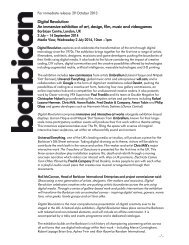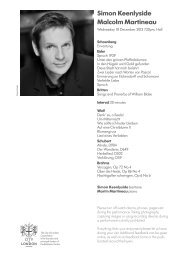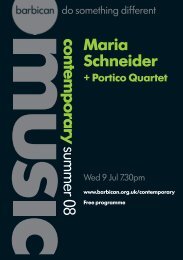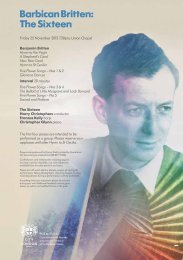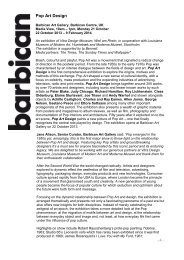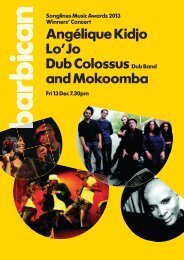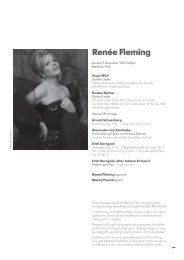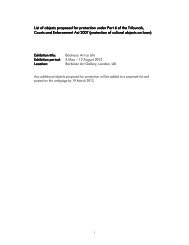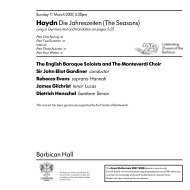Download your concert programme here - Barbican
Download your concert programme here - Barbican
Download your concert programme here - Barbican
Create successful ePaper yourself
Turn your PDF publications into a flip-book with our unique Google optimized e-Paper software.
Wednesday 3 February<br />
Sergey Prokofiev (1891–1953)<br />
Piano Concerto No. 2 in G minor, Op. 16 (1912–13)<br />
1 Andantino<br />
2 Scherzo: Vivace<br />
3 Intermezzo: Allegro moderato<br />
4 Allegro tempestoso<br />
Yefim Bronfman piano<br />
Prokofiev was a born show-off and a born competitor, and<br />
his music demonstrates that time and again – not necessarily<br />
in aggressive or unpleasant ways, though that side of his<br />
nature certainly surfaced from time to time, but rather in his<br />
fondness for telling stories, for casting magic spells, for<br />
demonstrating gymnastic, sporty and especially balletic<br />
prowess. Those are all qualities calculated to hold an<br />
audience in thrall, and they combined to make him a natural<br />
for the <strong>concert</strong>o medium.<br />
His Second Piano Concerto gives the fullest possible rein to<br />
all these gifts. He composed it in 1912–13, just before his<br />
graduation from the St Petersburg Conservatoire, primarily<br />
as a vehicle for his own virtuosity, and many would rate it by<br />
some distance the most technically demanding of all<br />
<strong>concert</strong>os in the standard repertoire. Though Prokofiev never<br />
admitted as much, it would not be surprising had he been<br />
deliberately aiming to outdo Rachmaninov’s massive Third<br />
Concerto, which was published and first performed in Russia<br />
in 1910. Prokofiev’s score was destroyed by fire at the time of<br />
the 1917–21 Civil War in the early days of Bolshevik rule. He<br />
reconstructed and reorchestrated it in his voluntary exile,<br />
during a stay in Bavaria in 1923.<br />
The deceptively lulling first theme is marked narrante<br />
(narrating), just as Rachmaninov’s plainer opening theme<br />
could easily have been. But this story proves to be not one of<br />
Rachmaninovian nostalgia and longing, nor of heroism and<br />
triumph, nor even one in which the soloist becomes<br />
emotionally embroiled. Rather it is in essence a fairytale,<br />
populated by larger- and stranger-than-life characters,<br />
unfolding in a world of mythical castles, potentates,<br />
hobgoblins and sundry grotesques. It asks us to suspend<br />
disbelief and look on in childlike awe.<br />
4




